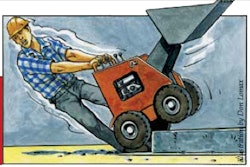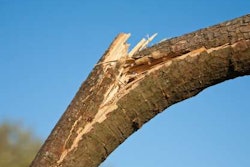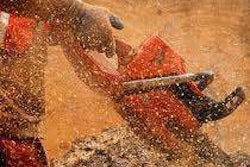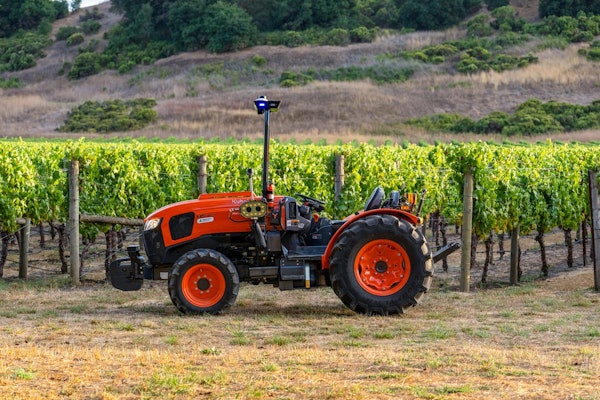Landscapers operate tire machines, track machines or a combination. Each has its own advantages and setbacks, but did you know how you operate each machine translates to the life of the machine? It’s common knowledge, like Equipment Operation 101, but many landscapers don’t take the time to really understand their machines, which can hurt their budgets in the long run.
Preventing hazardous practices
The most common pitfall to avoid with tires is low tire pressure. The Tire Retread & Repair Information Bureau (TRIB) says tires driven on low pressure cause unnecessary drag, which can reduce the number of miles the machine gets for every gallon used. A machine is also more apt to blow a tire when driven on low pressure.
Load ratings are another potential problem operators tend to overlook. Harry Tripp, assistant manager of the Maxxis Specialty Division, says when you operate a machine with tires not rated for the load it will carry, tires are more likely to heat up or split.
“Load rating is a function of tire pressure,” Tripp says. “Keep the tires in recommended operating range so they can handle the load.”
Don Chambers, product manager and sales for OTR Wheel Engineering, says to check ply ratings when buying tires, and make sure you buy thick enough tires for the job. He says 10-ply is the most common.
Tripp says most loader tires are made for abuse; however, operators should still be careful on jobsites where nails and rebar are present.
“Don’t plow full on into something,” Tripp says.
The easiest way to combat most tire problems is to keep a close eye on tire pressure. Check tire pressure often, and do this with a gauge, not by kicking the tires.
It is especially important to be aware of tire pressure in colder conditions. For every 10-degree drop in temperature, tire pressure can drop one to two pounds per square inch, according to the Rubber Manufacturers Association.
While pressure isn’t an issue with tracks, there are several areas to watch, most importantly, where the tracks are operating.
Jared Steier, national track manager for Solideal USA, says compact track loaders were somewhat misrepresented when they were introduced. He says many were sold and applied in situations where tracks are not designed to operate. For this reason, operators would throw tracks and not understand why, as track machines seemed beefy enough to handle the tasks.
“Machines started to wear out because they were misapplied,” Steier says. “Highly abrasive applications are bad for them – gravel, concrete, rebar will absolutely eat a track.”
Steier says if machines have to be operated near abrasive materials, go slowly in one direction and don’t make zero radius turns. He also says the operator should never drive over curbs or tree trunks because it causes serious internal damage, which is costly to repair.
Chambers says to check the sprockets and rollers for debris, and be wary of running tracks in reverse.
“For operators who run a track machine backward as hard as they do forward, wear on the main sprocket can cause the track to slip off,” Chambers says.
Outside of operation and maintenance, a common difficulty landscapers encounter is buying tires and tracks. Manufacturers agree when looking to purchase tires or tracks, it’s important to do your homework to ensure you get a quality product. Check magazine reviews, Internet forums and talk to other people. When a deal seems too good to be true, it often is.
One last piece of advice is to read the maintenance suggestions listed in each machine’s manual – they may differ by manufacturer. Proper maintenance, which can be pricey for tracks, is more cost-effective when compared with expensive repairs.
“If you take the time to know and understand your machine, you’ll get so much more out of it,” Steier says.









